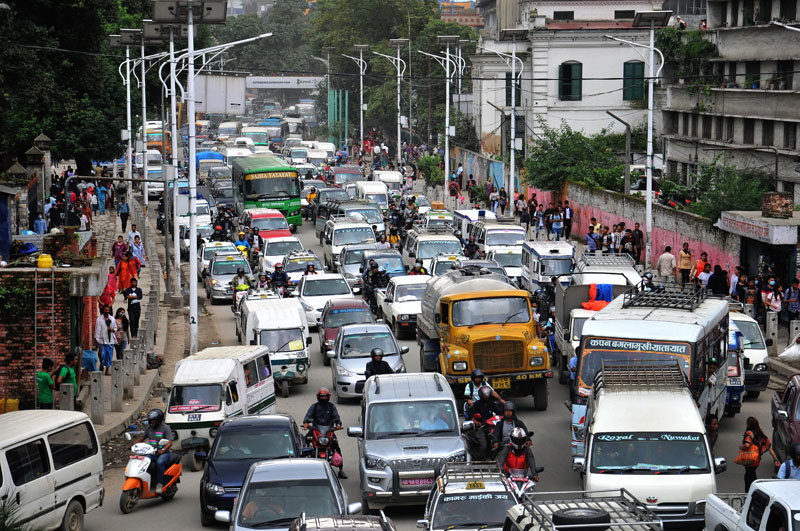OAG laments poor traffic management in Valley
Kathmandu, April 13
The Office of the Auditor General has raised serious concern about poor traffic management in Kathmandu Valley which it largely attributed to rapidly increasing urbanisation, vehicular pressure, congested roads and rampant violation of road discipline.
The 54th annual report of the OAG submitted to President Bidhya Devi Bhandari stated that traffic management was more terrible in Thapathali, Balkhu, Kalanki, Koteshwor, Gaushala, Maharajgunj and Balaju. During peak hours — 9:00am-11:00am and 4:00pm-6:00pm, a vehicle is caught in traffic jam for up to one-and-a-half hours.
“The traffic nightmare coupled with suffocating air pollution caused by dust and vehicular emission is a double whammy for motorists, commuters and pedestrians,” the report read. The traffic police to vehicle ratio was 557:78,243 in 1995 against 965:850,000 in 2017. The number of vehicles has increased by over 840 per cent against mere 75 per cent increment in traffic police strength during the period. The current strength of MTPD is 1,200.
More than 850,000 vehicles ply the Valley roads. The road network has been extended from 1,319 km in 1995 to 1,595 km in 2017. It means the concerned authorities have been able to extend road length by only 20 per cent in the past 21 years compared to the current requirement of around 3,000 km as per the population density and growing number of vehicles. On an average, a traffic cop has to cover 1.46 km.
The report also blamed the imbalance in human resources to vehicle ratio for traffic jams and worsening road safety, suggesting to the government to go hi-tech and introduce intelligent traffic system. Deployment of adequate human resources, installation of traffic lights and CCTVs, phasing-out of old vehicles, arrangement of large buses for mass transportation and coordination between traffic police and Ministry of Physical Infrastructure and Transport could play a vital role in managing the Valley traffic, it suggested.
The MTPD has installed over 200 CCTV cameras in its control room for efficient supervision, regulation and traffic monitoring in Kathmandu to compensate for the shortage of human resources.
READ ALSO:






